#August 1886
Explore tagged Tumblr posts
Text

L'Art et la mode, no. 36, vol. 7, 7 août 1886, Paris. Art et Chiffons. Bibliothèque nationale de France
#L'Art et la mode#19th century#1880s#1886#on this day#August 7#periodical#fashion#illustration#banner#bibliothèque nationale de france#dress
74 notes
·
View notes
Text











In New York Harbor, President Grover Cleveland dedicated the Statue of Liberty on October 28, 1886.
Statue of Liberty Dedication Day
Statue of Liberty Dedication Day celebrates the Statue of Liberty, and commemorates the day on which it was dedicated in 1886. The idea for the statue was proposed by French historian Edouard de Laboulaye in 1865. France decided to build and give the statue to the United States to commemorate the centennial of the signing of the Declaration of Independence, the alliance between the two countries during the Revolutionary War, and the friendship that continued afterwards. An agreement was made that the statue would be paid for by the people of France, and the pedestal on which it would stand would be paid for by Americans. The project was delayed because of lack of funds from both countries, especially the United States, but the money was eventually raised. French artist Frederic-Auguste Bartholdi designed the statue, and its support system was engineered by Eugene-Emmanuel Viollet-le-Duc and Alexandre-Gustave Eiffel—who shortly afterwards became famous for his work on the Eiffel Tower.
In June 1885 the statue arrived in New York City in 214 packing crates, and was reconstructed on Bedloe’s Island—which was renamed Liberty Island in 1956. On October 28, 1886, the Statue of Liberty was dedicated. A red barge transported to the island those who wanted to see the event. President Grover Cleveland officiated, and a speech was given by Ferdinand de Lesseps, who was a French diplomat, and head of the Franco-American Union, a group that had been created in 1875 to facilitate the completion of the project. There was music and a gun salvo, and Bartholdi, the mastermind of the statue, was perched in the statue’s torch, and pulled a rope that removed the French flag from in front of Lady Liberty’s face, revealing it to the crowd. That evening the torch was lit for the first time.
The statue stands 151 feet tall, and is made of a copper sheeting covering an iron framework. Its pedestal is 154 feet in height, and is made of granite. Besides holding a torch, Lady Liberty—who was based off of Libertas, the Greek god of freedom—holds a tablet in which the date July 4, 1776, is inscribed. The statue became an important symbol for immigrants, especially after nearby Ellis Island began processing them in 1892. It was the first thing that they saw while entering New York Harbor, and many wrote home to their relatives in their home countries about it. Emma Lazarus’ poem, “The New Colossus”, was eventually added to the pedestal, further cementing the relationship between immigrants and the statue. It became a U.S. National Monument in 1924, and the National Park Service now oversees the whole island. Today the statue stands as a universal symbol of freedom and liberty.
How to Observe
The best way to celebrate the day, is to visit the Statue of Liberty, or plan a trip to do so. A boat can be taken to Liberty Island, and the pedestal and crown of the statue can be explored.
Source
#President Grover Cleveland by Bryant Baker#President Grover Cleveland#USA#dedicated#Statue of Liberty#28 October 1886#anniversary#US history#Gustave Eiffel#Frédéric Auguste Bartholdi#sculpture#Buffalo City Hall#Buffalo#New York City#New York#summer 2013#2018#original photography#architecture#New York Harbor#tourist attraction#landmark#Manhattan#travel#vacation#cityscape#StatueOfLibertyDedicationDay#Statue of Liberty Dedication Day
3 notes
·
View notes
Text



auguste rodin. eve after the fall. 1886.
details
6 notes
·
View notes
Text
The Statue of Liberty was originally called Liberty Enlightening the world. Her sculptor was Frédéric Auguste Bartholdi,and Alexandre Gustavo Eiffel was the structural engineer. Construction began 1875 in Paris, and finished in 1884.
Lady Liberty arrived in New York Harbor 1885, but funds were needed to erect her. Her arm was in Madison Square Park at 23rd St.,and anyone could pay 50 cents to climb to the torch balcony. Finally having the money for completion, President Grover Cleveland was able to dedicate her on 10/28/1886.
The Statue of Liberty weighs 225 tons. She is 305 feet,6 inches tall overall (including base). Her waistline is 35 feet. The seven rays on her crown represent the continents. A feature that is not visible due to pedestal height are the broken shackles around her feet. They represent lady Liberty's freedom from oppression and control.
Below the hand and torch of the Statue of Liberty being built in a Paris studio around 1876. The other picture is of her arm in Madison Square Park.


#statue of liberty#liberty enlightening the world#Frédéric Auguste Bartholdi#Alexandre Gustavo Eiffel#1875#1884#1886
0 notes
Text

حان الوقت للسفر إلى باريس الممطرة!
تعرض هذه اللوحة مشهداً صاخباً في الشارع، حيث يستخدم المعظم مظلّات ليحموا أنفسهم من المطر. على الجانب الأيمن، تنظر أم إلى إبنتيها وهما ترتديان أزياء مواكبة لموضة عام ١٨٨١ من أجل نزهة بعد الظهيرة. كما نرى سيدة تم ضبطها وهي تفتح مظلتها أو تغلقها، في إشارة إلى بدء المطر أو ربما توقفه قريباً.
ليس التركيز الأساسي للوحة في الوسط بل على اليسار، حيث يمكنكم رؤية شاب ذي لحية يبدو كأنه على وشك أن يوفر ملجأ لإمرأة تحمل صندوق قبعات. ومن المثير للإهتمام أنها لا ترتدي قبعة أو معطف واقٍ من المطر أو مظلة، وهو أمر غير معتاد بالنظر إلى الطقس. إنها مساعدة صانع قبعات أو خياطة ملابس نسائية صُورت من قبل سوزان فالادون، حبيبة رينوار، وفنانته، وموضوعه المتكرر، هي وإحدى الفتاتين على اليمين ذات التارة والعصا تنظران إلينا مباشرةً بينما بقية الناس منشغلين بأنشطتهم.
على الرغم من أن التكوين يبدو طبيعي، إلا أن زوايا المظلات مرتّبة بعناية لخلق أشكال هندسية ويمكنكم رؤية عناصر دائرية كصندوق قبعة المرأة وتارة الفتاة. تسود الألوان الزرقاء والرمادية اللوحة مع نمط من المظلات في الأعلى وملابس الأشخاص في الأسفل.
The Umbrellas
Pierre-Auguste Renoir
c. 1880-1886
1 note
·
View note
Text

The Umbrellas, Pierre-Auguste Renoir, between 1881 and 1886
#art#art history#Renoir#Pierre-Auguste Renoir#genre painting#genre art#Impressionism#Impressionist art#French Impressionism#French art#19th century art#oil on canvas#National Gallery#National Gallery London
563 notes
·
View notes
Text
19th Century Vampire Lit I'm Gonna Read
Because I've lost my mind.
Most of these texts were found with the aid of these two posts. I did not include any of the stories listed as "not technically about vampires," except for "Let Loose," because it concerns a specter seeking blood, and "Vampirismus," because it's called "Vampirismus."
A strikethrough indicates that I've already read the work. Bold text indicates that I cannot find an English translation, whether online or for purchase. If you know of English translations of any bolded titles, please let me know.
Thalaba the Destroyer, Robert Southey (1801)
"The Vampire," John Stagg (1810)
The Giaour, Lord Byron (1813)
"A Fragment of a Novel," Lord Byron (1816)
"The Vampyre," John William Polidori (1819)
The Black Vampyre, Uriah Derick D'Arcy (1819)
The Vampire Lord Ruthwen, Cyprien Bérard (1820)
The Vampire, or The Bride of the Isles, J.R. Planché (1820)
The Vampire, Charles Nodier (1820)
"Vampirismus," E.T.A. Hoffman (1821)
Smarra, or Demons of the Night, Charles Nodier (1821)
"Wake Not the Dead," Ernst Raupach (1823)
The Vampire, or the Hungarian Virgin, Étienne-Léon de Lamothe-Langon (1825)
Der Vampyre und seine Braut, Karl Spindler (1826)
La Guzla, ou Choix de Poesies Illyrique, Prosper Merimee (1827)
"Pepopukin in Corsica," Arthur Young (1827)
The Vampire, Heinrich Masrschner and Wilhelm August Wohlbrück (1828)
The Skeleton Count, or the Vampire Mistress, Elizabeth Caroline Grey (1828)
Der Vampyre, oder die Totenbraut, Theodor Hildebrand (1828)
"The Vampire Bride," Henry Thomas Liddell (1833)
Clarimonde, Théophile Gautier (1836)
The Family of the Vourdalak, Aleksey Tolstoy (1839)
The Vampire, Aleksey Tolstoy (1841)
"The Vampyre," James Clerk Maxwell (1845)
Varney the Vampire, or The Feast of Blood, James Macolm Rymer (1845-1847)
The Pale Lady/The Carpathian Mountains/The Vampire of the Carpathian Mountains, Alexandre Dumas (1849)
"The Vampyre," Elizabeth F. Ellet (1849)
The Phantom World [select chapters], Augustin Calmet (1850)
The Vampire, Alexandre Dumas (1851)
The Vampires of London, Angelo de Sorr (1852)
The Dead Baroness/The Vampire and the Devil's Son, Pierre Alexis Ponson du Terrail (1852)
"The Vampire," Charles Pierre Baudelaire (1857)
Knightshade/The Shadow Knight, Paul Féval (1860)
"The Mysterious Stranger," Karl von Wachsmann (1860)
"Metamorphosis of a Vampire," Charles Pierre Baudelaire (1860)
The Vampire of the Val-de-Grace, Leon Gozlan (1861)
"The Vampire; Or, Pedro Pacheco and the Bruxa," William H.G. Kingston (1863)
The Vampire/The Vampire Countess, Paul Féval (1865)
Vampire City, Paul Féval (1867)
"The Last Lords of Gardonal," William Gilbert (1867)
Vikram and the Vampire, Sir Richard Francis Burton (1871)
"The Vampire Cat of Nabéshima," Algernon Bertram Freeman-Mitford (1871)
Carmilla, Joseph Sheridan Le Fanu (1872)
"Ghosts," Mihail Eminescu (1876)
Der Vampyr – Novelle aus Bulgarien, Hans Wachenhusen (1878)
Captain Vampire, Marie Nizet (1879)
"The Fate of Madame Cabanel," Eliza Lynn Linton (1880)
After Ninety Years, Milovan Glišic (1880)
"The Vampyre," Owen Meredith (1882)
"The Vampire," Jan Naruda (1884)
"Manor," Karl Heinrich Ulrichs (1884)
"The Vampyre," Vasile Alecsandri (1886)
The Horla, Guy de Maupassant (1887)
"Ken's Mystery/The Grave of Ethelind Fionguala," Julian Hawthorne (1887)
"A Mystery of the Campagna," Anne Crawford (1887)
"Romanian Deaths and Burials-Vampires and Werewolves," Emily Gerard (1888)
"The Old Portrait," Hume Nisbet (1890)
"The Vampire Maid," Hume Nisbet (1890)
"Let Loose," Mary Cholmondeley (1890)
The Castle of the Carpathians, Jules Verne (1892)
"The Vampire," Felix Dahn (1892)
The Parasite, Sir Arthur Conan Doyle (1884)
"The True Story of a Vampire/The Sad Story of a Vampire," Count Eric Stenbock (1894)
"A Kiss of Judas," Julian Osgood Field (1894)
Lilith, George MacDonald (1894)
"The Prayer," Violet Hunt (1895)
"Good Lady Duncayne," Mary Elizabeth Braddon (1896)
"The Vampire of Croglin Grange," Augustus Hare (1896)
"Phorfor," Matthew Phipps Shiel (1896)
Dracula, Bram Stoker (1897)
"Dracula's Guest," Bram Stoker (1914*)
The Blood of the Vampire, Florence Marryat (1897)
*"Dracula's Guest" was first published in 1914 but was written either concurrent to or before the writing of Dracula.
I'm going to be honest. When I began, I thought there were four nineteenth century vampire stories. Five if you count Dracula's Guest. I've made a huge mistake.
#vampires#vampire fiction#vampire literature#19th century fiction#19th century literature#Gothic fiction
165 notes
·
View notes
Text

Lantern Plant Decors
Japanese lantern plant (hozuki) is commonly seen in Japan in August. I made two types of lantern plant decors for my sims.
Lantern plant in vase Decorative – plant, 17 simoleons LOD0 / LOD1 / LOD2: 2222 / 1886 / 1470 polygons
Dried lantern plant branches Decorative – plant, 17 simoleons LOD0 / LOD1 / LOD2: 2188 / 2059 / 1611 polygons
two swatches, base-game compatible my original meshes & textures
DOWNLOAD SFS or Mediafire
281 notes
·
View notes
Text
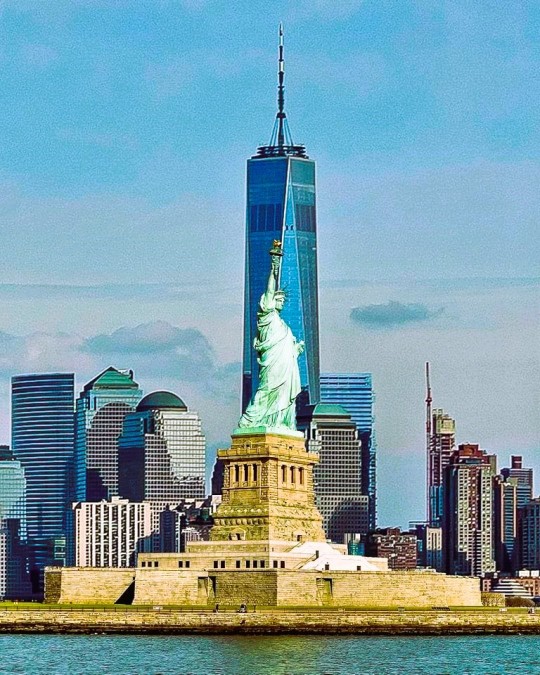
Statue Of Liberty, New York, United States: The Statue of Liberty National Monument is a United States National Monument comprising Liberty Island and Ellis Island in the U.S. states of New Jersey and New York. It includes the 1886 Statue of Liberty (Liberty Enlightening the World) by sculptor Frédéric Auguste Bartholdi and the Statue of Liberty Museum, both situated on Liberty Island, as well as the former immigration station at Ellis Island which includes the Ellis Island Immigrant Hospital. Wikipedia
170 notes
·
View notes
Text

Auguste Rodin Les Métamorphoses d'Ovide, 1886
Source
223 notes
·
View notes
Text

La Mode nationale, no. 17, 21 août 1886, Paris. No. 19. — Costume en lainage fantaisie. No. 20. — Toilette de faille. Bibliothèque nationale de France
No. 19. — Costume en lainage à damier loutre et martre. Première jupe plissée à larges panneaux. Seconde jupe, froncée à la ceinture, très relevée en éventail sur le côté pour former large pouf derrière. Corsage plat, avec revers et col en velours loutre, ouvrant sur un gilet en piqué blanc. Manches garnies de volants de dentelle.
No. 19. — Suit in otter and marten checkered wool. First skirt pleated with wide panels. Second skirt, gathered at the waist, very fanned out on the side to form a large pouf behind. Flat bodice, with otter velvet lapels and collar, opening onto a white pique waistcoat. Sleeves trimmed with lace flounces.
Métrage: 9 mètres d'étoffe en 1m,20 de large.
Chapeau paillasson relevé derrière, garni d'une touffe de plumes sur le sommet et d'une torsade de ruban écossais sur la passe.
Raised straw hat with a tuft of feathers on the top and a twist of Scottish ribbon on the pass.
—
No. 20. — Toilette de faille. Jupe très drapée ouvrant, sur le côté, sur une ruche de dentelle genre Chantilly. Long pouf retombant droit derrière. Corsage fermé du haut, ouvert du bas sur un gilet semblable. Manches bouffantes du haut, plates du bas, terminées par un nœud de ruban.
Capote ronde, garnie devant de ruban bouillonné, avec piquet de fleurs et coques sur la forme.
No. 20. — Faille dress. Very draped skirt opening, on the side, on a Chantilly lace ruffle. Long pouf falling straight back. Bodice closed at the top, open at the bottom on a similar waistcoat. Puffed sleeves at the top, flat at the bottom, finished with a ribbon bow.
Round hood, trimmed in front with bubbled ribbon, with flower spikes and shells on the shape.
#La Mode nationale#19th century#1880s#1886#on this day#August 21#periodical#fashion#fashion plate#description#bibliothèque nationale de france#dress#bustle#suit
42 notes
·
View notes
Text
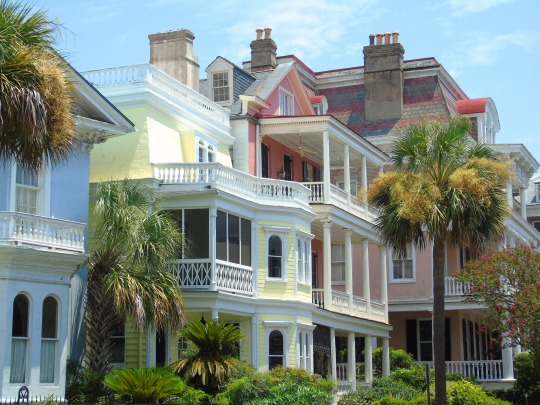
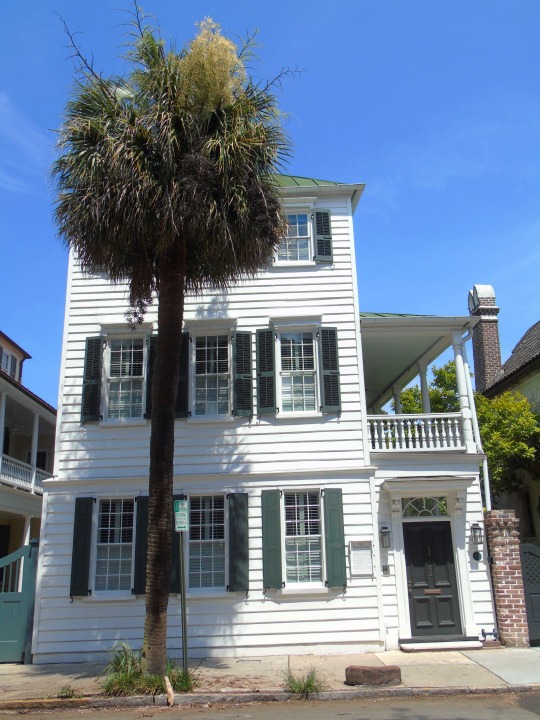
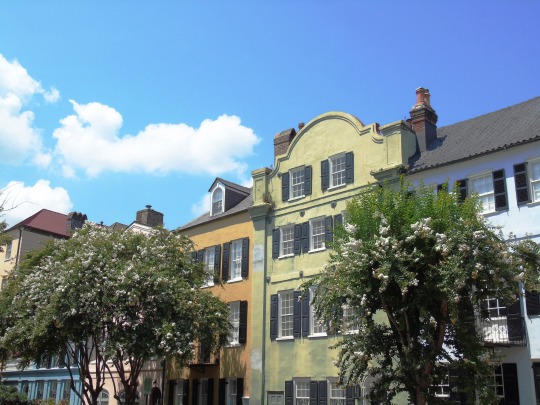



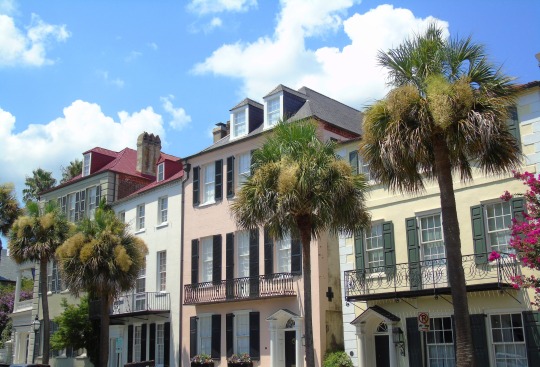
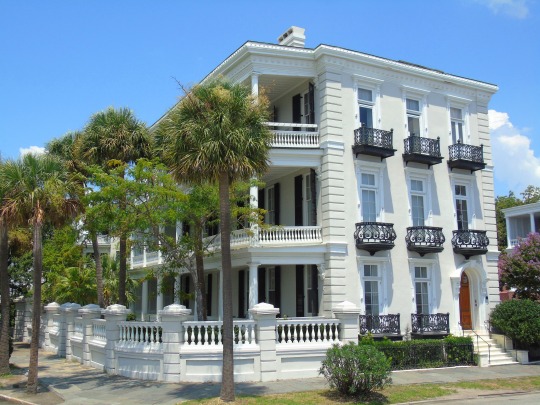
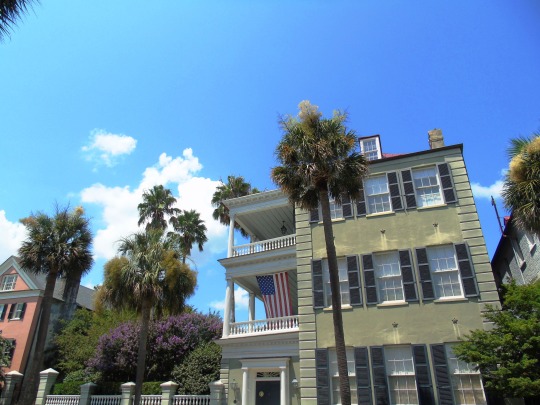

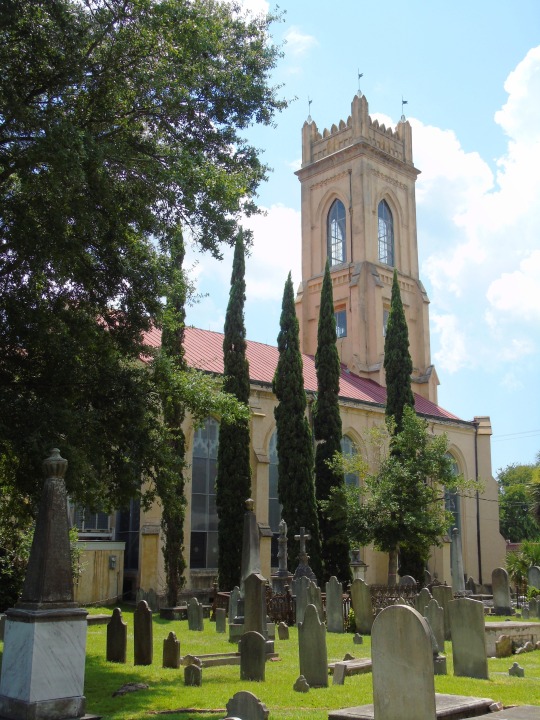
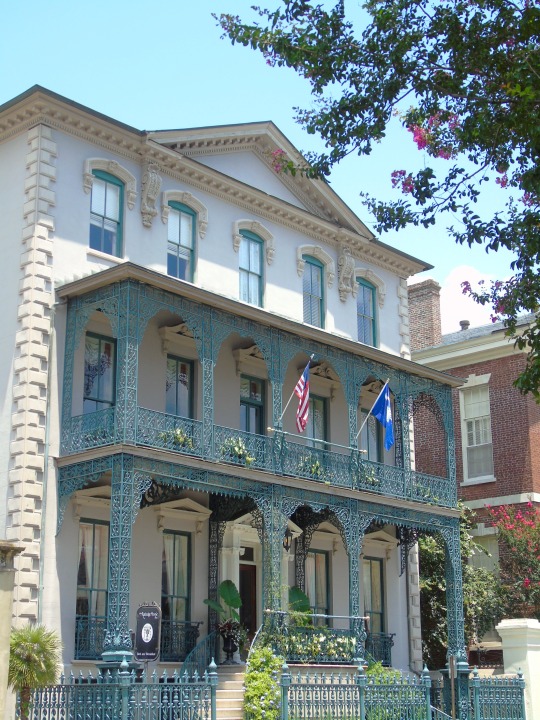
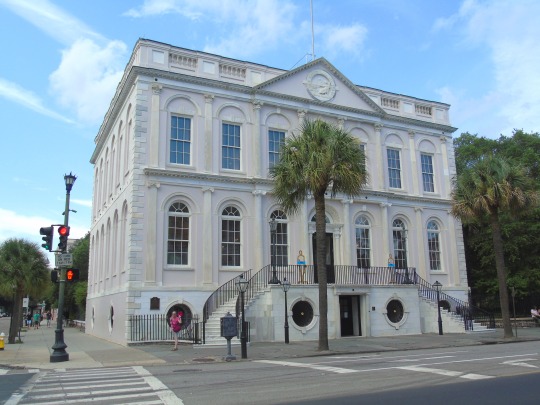


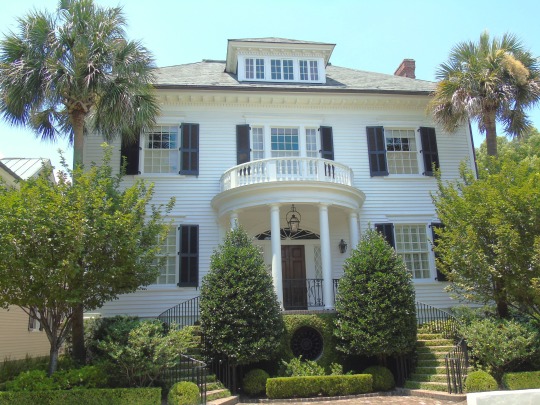
The 7.0 Mw Charleston earthquake on August 31, 1886, affected southeastern South Carolina with a maximum Mercalli intensity of X (Extreme); 60 people killed with damage estimated at $5–6 million.
#Charleston earthquake#31 August 1886#South Carolina#travel#original photography#vacation#tourist attraction#landmark#cityscape#architecture#USA#summer 2016#Charleston#anniversary#US history#exterior#Louis DeSaussure House#St. Philips Church Episcopal West Cemetery#Southeastern USA
7 notes
·
View notes
Text

Pierre-Auguste Renoir (1841-1919) "The Braid" (1886-1887) Oil on canvas
#paintings#art#artwork#genre painting#female portrait#pierre auguste renoir#oil on canvas#fine art#french artist#portrait of a woman#braid#braided hair#hair braiding#1880s#late 1800s#late 19th century
378 notes
·
View notes
Text
‼️ I FINISHED MAKING BIRTHDAYS FOR THE RDR2 GANG‼️ (under the cut)
these are my own personal headcanon (with some help from the comments) so take with a grain of salt, we may have different interpretations
(source for all traits is zodiacsign.com)
DUTCH VAN DER LINDE
- Founding member, for 23 years (1876, when he was 21)
- 44 in May 1899
- Born April 11th 1855 (Aries)
Positive Apr 11th traits: “Assertive, strong and remarkably passionate, they will burn every obstacle in their way if they have something to strive for. They are excellent workers and managers, showing initiative with just enough tact to be loved by a team they work in.”
Negative Apr 11th traits“Preoccupied with their own problems, they could fail to see what their friends and close people are going through. Self-centered, too feisty, ready for battle when it isn't necessary, reactive, and sometimes aggressive when they should remain calm.”
HOSEA MATTHEWS
- Founding member, for 23 years (since 1876, when he was 32)
- 55 in May 1899
- Born October 22nd 1843 (Libra)
Positive Oct 22nd traits: “Warm, open for emotional contact, and nurturing, they are tender and kind to those they love and treat everyone with enough empathy to resolve issues at hand. Their emotional sensitivity is their greatest strength.”
Negative Oct 22nd traits: “Covered in sadness, broken and depressed, they might lose faith if they don’t give themselves time to rest and regenerate from past experiences. Tied by stories of their ancestors, they could simply play parts of others without getting truly invested in their own life and their happiness.”
ARTHUR MORGAN
- In gang for 23 years (since 1876,when he was 13)
- 36 in May 1899
- Born September 30th 1862 (Libra)
Positive Sep 30th traits: “Truthful, powerful, deep and ready to commit to issues that are too painful for other people, they have the power to change the unchangeable and build a sense of magic in their life that allows them to attract and control their own destiny and heal others of prejudice.”
Negative Sep 30th traits: “Depressed or lost in what they’ve been taught, they could be too scared to get out of their usual directions and choices in life, getting stuck in mental activities that keep them unsatisfied, egocentric or grumpy.”
SUSAN GRIMSHAW
- In the gang for 14 years (since 1885, since she was 29)
- 45 in 1899
- Born March 27th 1854 (Aries)
Positive Mar 27th traits: “Standing out, innovative and wide in perception of the world, they are good friends and tend to build a social circle that can support them in their path. Free to shine and give freedom to other people.”
Negative Mar 27th traits: “Stressed, torn between extremes, their mood changes without warning. They can get aggressive if too much anger builds up, unsure how they will react or what their next move will be.”
JOHN MARSTON
- In gang for 14 years (since 1885, when he was 12)
- 26 in May 1899
- Born August 3rd 1872 (Leo)
Positive Aug 3rd traits: “Straightforward, on the move, and wide in their opinions, they are the travelers with a cause, those who share their views and their knowledge selflessly, and wish to give their energy to those willing to follow.”
Negative Aug 3rd traits: “Stubbornly chasing after things that aren’t real, they could get stuck in a loop of disappointment and mental efforts that won’t lead them where they wish to go.”
SIMON PEARSON
- In the gang for 13 years (since 1886, since he was 35)
- 48 in 1899
- Born December 16th 1850 (Sagittarius)
Positive Dec 16th traits: “Laughter, positivity, and a fun personality ordain those born on December 16th for as long as they are in tune with their talents. Emotionally charged, they stay on the move, give love to be loved, and understand how to create balance when they find themselves falling into an extreme.”
Negative Dec 16th traits: “Lost in confusion of relating with others, they absorb atmospheres, feelings and ultimately opinions of others, thinking that their personality is defined by what others see instead of feeling their own core of Self.”
LEOPOLD STRAUSS
- In the gang for 12 years (since 1887, since he was 41)
- 53 in 1899
- Born in September 10th 1845 (Virgo)
Positive Sep 10th trait: “Deep, intelligent and extremely powerful, they are focused and dedicated to the higher truth and find change satisfying, without fear of what tomorrow might bring. They bring order to large things in the lives of people around them and announce change everywhere they go.”
Negative Sep 10th traits: “Obsessive, possessive and jealous, they can get dismissive of other people's ways and unwilling to recognize their own shadows while judging others. When bruised, they may become vindictive or manipulative.”
UNCLE
- In the gang for 11 years (since 1888, since he was 43)
- 57 in 1899
- Born May 6th 1842 (Taurus)
Positive May 6th traits: “Loving, creative, good with children, they are positive individuals with a lot of energy to live life to the fullest. Humorous, smiling, and grounded, they search for a place to belong to and connect easily to other people.”
Negative May 6th traits: “Unaware of the bigger picture, too focused on problems when they become aware of them, they can get obsessive and go into negative details for days. At times superficial in search for pleasure, but only if their heart isn’t open for relating.”
JOSIAH TRELAWNY
- In the gang for 9 years (since 1890, since he was 31)
- 40 in 1899
- Born May 26 1859 (Gemini)
Positive May 26th traits: “Loving, emotional, kind and caring, they are the messengers of beauty and laughter, humorous enough to make a grown person turn into a little child if this is their intent.”
Negative May 26th traits: “Using the power of words for strange things, unsatisfied and unable to find balance between emotion and reason, they get lost waiting and thinking about times when they were actually free while missing opportunities to set free in the now.”
ORVILLE SWANSON
- In the gang for 8 years (since 1891, since he was 38)
- 46 in 1899
- Born November 29th 1852 (Sagittarius)
Positive Nov 29th traits: “Idealists with a cause, they dream big and aren’t afraid to try themselves out in talents that make them who they are. On the quest for inner truth, they are sensitive, empathic and honest about the way they feel with people they love.”
Negative Nov 29th traits: “Seeking attention and unable to untangle issues that keep them intoxicated or tied to the past, they could get lost, searching for ways to anesthetize that pain and forget what bruised them in the first place.”
BILL WILLIAMSON
- In the gang for 5 years (since 1894, since he was 28)
- 33 in May 1899
- Born in April 27th 1866 (Taurus)
Positive Apr 27th traits: “Strong-hearted individuals, filled with vigor and energy for things that make them feel passionate. They are different but social, well-incorporated into society, and make excellent friends who find humanitarianism and compassion to be everything that is right in the world.”
Negative Apr 27th traits: “Sloppy, unsure what they wish to do with their energy and frustrated with their own nature. In opposition to themselves, they are unable to heal their own inner differences, becoming frustrated and passively angry at other people.”
ABIGAIL ROBERTS
- In the gang for 5 years (since 1894, since she was 17)
- 22 in 1899
- Born October 20th 1876 (Libra)
Positive Oct 20th traits: “Deeply emotional and empathic, if they keep their heart open throughout changes in their life, they become healers and incredible support in times of crisis and all possibly dangerous situations in the lives of others.”
Negative Oct 20th traits: “Casting their feelings away, they could become cold, distant, too difficult to relate to, and vindictive. They need a strong foundation to grow from and won’t be at all pleasant if they don’t learn to regenerate and flow with the beat of their heart.”
KAREN JONES
- In the gang for 4 years (since 1895, since she was 21)
- 25 in 1899
- Born June 12th 1873 (Gemini)
Positive June 12th traits: “Emotional, sensitive, compassionate and willing to listen, they are less rational than other Gemini representatives and this gives them more space for relating and reaching for the Divine Love.”
Negative June 12th traits: “Moody, torn between different roles and too adaptable to people and situations that don’t make them feel good. They get self-destructive when unable to deal with their own emotional baggage.”
JAVIER ESCUELLA
- In the gang for 4 years (since 1895, since he was 22)
- 26 in May 1899
- Born August 13th 1872 (Leo)
Positive Aug 13th traits: “Energetic, focused visionaries, ready to act with initiative and clarity of ideals, they are the ones to fight for the cause and move forwards when others would stay behind. They are warm, passionate people, ready to learn new things and move one step ahead of the rest of the world.”
Negative Aug 3rd traits: “Feeling as if they were all mighty, they often get caught up in their own ambitions and strivings, expecting nothing less than perfect from their ways of expression and battles that might be impossible to win.”
JACK MARSTON
- In the gang for 4 years (since 1895, since he was born)
- 4 in May 1899
- Born November 7th 1894 (Scorpio) (tried to be based on RDR1 but i’ve never played it 😬)
Positive Nov 7th traits: “Innovative, groundbreaking, different and individualistic, they understand that their greatest quality hides in their special way of standing out. Reliable friends with a need to fight for the greater good, they are those who bring necessary changes into a dysfunctional system.”
Negative Nov 7th traits: “In their battles they might get lost, become aggressive and pushy, losing contact only to pursue information held in their mind. Their mental processes get detached from their heart, leading them into abusive states towards self and others when they should be simply flowing with the times.”
MARY-BETH GASKILL
- In the gang for 3 years (since 1896, since she was 20)
- 23 in May 1899
- Born March 3rd 1876 (Pisces)
Positive Mar 3rd traits: “Great learners, teachers, and healers, they find love and beauty in everything they see and touch. It is their talent to use their optimism and beliefs, and turn every negative thing and experience to art, acceptable fate, and a step to a brighter future.”
Negative Mar 3rd traits: “In denial, distant, lost, they can be wanderers that cannot find the right direction to move in. Their defense mechanism protecting them from hardship is delusion.”
TILLY JACKSON
- In the gang for 3 years (since 1896, since she was 17)
- 20 in May 1899
- Born February 18th 1879 (Aquarius)
Positive Feb 18th traits: “Passionate, creative, focused, and understanding, this is someone able to sense the moment when the leader is needed, bravely becoming one. Fast and fiery, on their search for emotion, they wish to stay open-hearted throughout their lifetime.”
Negative Feb 18th traits: “With boundaries shaken, they can dismiss emotions, becoming overly rational and turned to the practical future in front of them. Unaware of their own sensitivity and hurt they might have caused to other people.”
MOLLY O’SHEA
- In the gang for 2 years (since 1897, since she was 22)
- 24 in May 1899
- Born May 4th 1875 (Taurus)
Positive May 4th traits: “Dependable, organized, ambitious, and responsible, they are easy to work and plan a future with. Just and turned to values of interpersonal bonding that lead them towards ideals.”
Negative May 4th traits: “A bit dark, difficult, and stiff, they can be set in their mind and unable to change. Stuck in a moment, a relationship or a job that makes them unhappy, it is their imperative in life to find faith and let go to the pull of the Universe.”
SEAN MACQUIRE
- In the gang for 1 years (since 1898, since he was 25)
- 26 in May 1899
- Born July 23rd 1872 (Leo) (sign rec from anon)
Positive July 23rd traits: “Optimistic, with a fine sense of humor and ready to chase off any negative emotions with their smile, they are positive, loving and supportive of those they care for. Travelers and teachers, they have something important to give to the world.”
Negative 23rd traits: “Scattered and pushed by too many beliefs they never questioned, they tend to spin in circles of negative choices, lost in their inability to receive as much as they give away or vice versa.”
CHARLES SMITH
- In the gang for 9 months (Since August 1898, since he was 26)
- 27 in May 1899
- Born November 1st 1871 (Scorpio)
Positive Nov 1st traits: “Centered, standing firm on their identity and seeing the light in others, they make wonders in therapeutic and supportive relationships with those who are insecure and find it hard to stand confident on their own two feet. Strong-willed and ready to learn, they are the ones to lead the way when their beliefs are set in place.”
Negative Nov 1st traits: “Getting lost among strong individuals meant to inspire them, they give up on their true role due to lack of belief in their own emotional world and their personal convictions. This could get them lost and put their talents to waste out of the need to prove themselves worthy.”
LENNY SUMMERS
- In the gang for 9 months (since 1898, since he was 19)
- 19 in May 1899
- Born June 5th 1880 (Gemini)
Positive June 5th traits: “Childlike, curious, excited about life and focused on their daily sources of happiness, they are humorous and always with a nice thing to say in just the right moment.”
Negative June 5th traits: “In need of a different view, they could get stuck in patterns that don’t give much room for personal growth. If their hearts close, they become superficial and uncaring for the wellbeing of those who aren’t in their closest social circle.”
MICAH BELL
- In the gang for 4 months (Since december 1898)
- 39 in May 1899
- Born January 1 1860 (Capricorn)
Positive Jan 1st traits: “Powerful and resourceful individuals with an incredible potential for a successful life, influential and knowing exactly where they belong. They are assertive, strong-willed, with a deep understanding for natural development of any issue at hand.”
Negative Jan 1st traits: “Inventors and great minds that turn to solitude and separate from the ideal of emotional fulfillment. Manipulative, they may be using questionable methods to reach their goals.”
SADIE ADLER
- In the gang for a few months (since May 1899, since she was 25)
- 25 in May 1899
- Born July 4th 1873 (Cancer)
Positive July 4th traits: “Focused on their goal point, ambitions and understanding the consequences of their deeds, they are strong, endurable and extremely reliable as friends and confidants.”
Negative July 4th traits: “Dark and filled with depressing thoughts, they can get pulled by negative emotions, memories they don’t know how to metabolize, and nostalgic turns that pull them into harmful circumstances that weaken their boundaries.”
KIERAN DUFFY
- In the gang for a few months (since May 1899, since he was 28)
- 28 in May 1899
- Born January 20th 1871
Positive Jan 20th traits: “Compassionate, caring, sensitive and talented, this is someone who can create incredible things if emotionally supported by all the right people. Nurtures their inner child and cares for others greatly even when holding back instead of showing their affection.”
Negative Jan 20th traits: “Closed from the rest of the world, unable to find meaning in hurtful experiences from the past and questioning their vision daily, these individuals easily turn to destructive tendencies.”
THANK YOU FOR YOUR HELP ‼️
#rdr2#dutch van der linde#hosea matthews#arthur morgan#john marston#javier escuella#bill williamson#micah bell#charles smith#sean macguire#lenny summers#sadie adler#karen jones#tilly jackson#mary beth gaskill#uncle rdr2#abigail roberts#abigail marston#susan grimshaw#simon pearson#josiah trelawny#reverend swanson#jack marston#dutch van der linde x reader#arthur morgan x reader#john marston x reader#javier escuella x reader#charles smith x reader#kieran duffy x reader#kieran duffy
166 notes
·
View notes
Photo

The Brooklyn Daily Eagle, New York, August 8, 1886
#1880s#victorian#vintage#history#newspapers#sarcasm#1880s fashion#victorian fashion#brooklyn#new york#victorian era#1886
357 notes
·
View notes
Text

'The Three Shades'. Auguste Rodin. 1881-1886.
87 notes
·
View notes